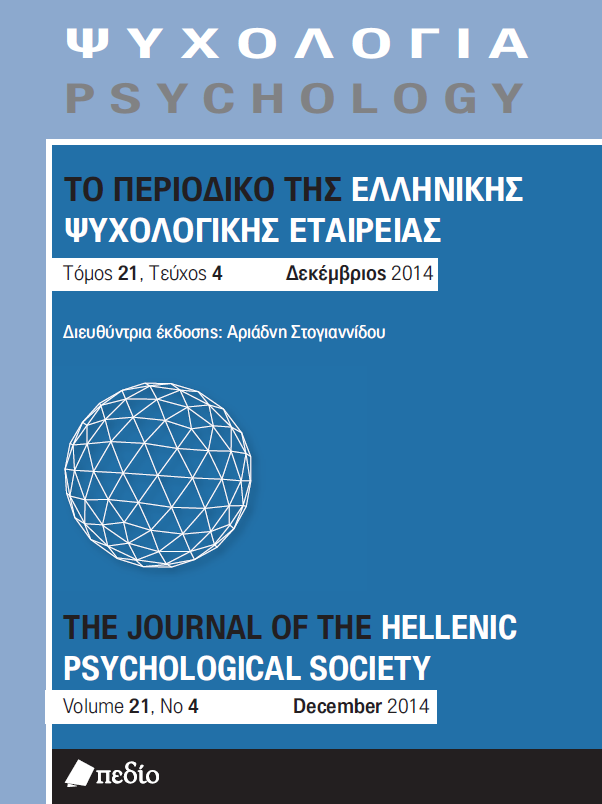Η ανάδυση των πρωτολέξεων: εμπειρικά δεδομένα για τη σταδιακή σύγκλιση παραμέτρων της λέξης

Περίληψη
Η μελέτη του πώς αναδύονται τα πρώτα ψήγματα λέξεων στo τέλος της βρεφικής ηλικίας προσκρούει σε μεθοδολογικά και θεωρητικά προβλήματα. Επειδή τα ψήγματα αυτά είναι σποραδικά, ασταθή, εν μέρει με ακαθόριστο νόημα και ιδιοσυγκρασιακή μορφή, δύσκολα καταγράφονται και ακόμη περισσότερο περιγράφονται με θεωρητικά εργαλεία κατάλληλα για τις λέξεις των ενηλίκων. Εάν μάλιστα, όπως διατείνονται ορισμένες θεωρητικές προσεγγίσεις, οι αναπτυξιακές αλλαγές είναι μακρόχρονες, βαθμιαίες και πολυδιάστατες, εγείρεται το ερώτημα ποιες ακριβώς ιδιότητες καθιστούν ένα εκφώνημα λεκτικό, πώς διαπλέκονται και γενικότερα πώς κατακτώνται όλο και μεγαλύτερες διαβαθμίσεις «λεκτικότητας» (wordiness). Η παρούσα έρευνα συμβάλλει στη συζήτηση μέσα από μικρογενετική ανάλυση των εκφωνημάτων δύο παιδιών που βιντεοσκοπήθηκαν ανά εβδομάδα μεταξύ 8 και 24 μηνών. Συνολικά 14.357 εκφωνήματα κωδικοποιήθηκαν ως προς τρεις παραμέτρους της λέξης: το φωνοπροσωδιακό σχήμα, τη συνάφεια με την περίσταση χρήσης τους και τη συμβατικότητα. Η ανάπτυξη αναδείχτηκε κατά βάση ίδια και στα δύο παιδιά, παρά κάποιες ενδιαφέρουσες ατομικές αποκλίσεις. Εκφωνήματα με και χωρίς τις παραπάνω ιδιότητες της λέξης συνυπάρχουν πάντα, αν και τα πρώτα αυξάνονται εντυπωσιακά με το χρόνο. Το φωνοπροσωδιακό σχήμα της λέξης έχει ήδη εμφανιστεί στους 8 μήνες, ακολουθεί η συνάφεια χρήσης των εκφωνημάτων στους 9 μήνες, σχεδόν αμέσως η σύγκλιση των δύο αυτών παραμέτρων και πολύ σύντομα η συμβατικότητα, αν και η τελευταία καθυστερεί αρκετά. Τα δεδομένα φαίνεται να υποστηρίζουν θεωρίες που μιλούν για βαθμιαία και πολυδιάστατη μετάβαση από τα προλεκτικά στα λεκτικά εκφωνήματα.
Λεπτομέρειες άρθρου
- Πώς να δημιουργήσετε Αναφορές
-
Καρούσου Α., Κατή Δ., & Σταμπουλιάδου Χ. (2008). Η ανάδυση των πρωτολέξεων: εμπειρικά δεδομένα για τη σταδιακή σύγκλιση παραμέτρων της λέξης. Ψυχολογία: το περιοδικό της Ελληνικής Ψυχολογικής Εταιρείας, 15(2), 119–138. https://doi.org/10.12681/psy_hps.23833
- Τεύχος
- Τόμ. 15 Αρ. 2 (2008)
- Ενότητα
- ΕΜΠΕΙΡΙΚΕΣ ΕΡΓΑΣΙΕΣ

Αυτή η εργασία είναι αδειοδοτημένη υπό το Creative Commons Attribution-ShareAlike 4.0 International License.
Το περιοδικό ΨΥΧΟΛΟΓΙΑ έχει υιοθετήσει μία πολιτική Platinum open-access. Τα έξοδα υποβολής, επεξεργασίας ή δημοσίευσης των εργασιών καλύπτονται από την Ελληνική Ψυχολογική Εταιρεία. Τα πνευματικά δικαιώματα των δημοσιευμένων εργασιών προστατεύονται από την άδεια 'Creative Commons Attribution-ShareAlike 4.0 International'. Οι Συγγραφείς διατηρούν τα Πνευματικά Δικαιώματα και χορηγούν στο περιοδικό το δικαίωμα της πρώτης δημοσίευσης. Η άδεια αυτή επιτρέπει σε τρίτους, να χρησιμοποιούν την εργασία σε οποιαδήποτε μορφή, με την προϋπόθεση της διατήρησης των διατυπώσεων που προβλέπονται στην άδεια σχετικά με την αναφορά στον αρχικό δημιουργό και την αρχική δημοσίευση στο περιοδικό ΨΥΧΟΛΟΓΙΑ. Επιπλέον, κάθε διανομή της εργασίας οφείλει να γίνεται με τους ίδιους όρους διανομής, δηλαδή με την ίδια άδεια Creative Commons.






